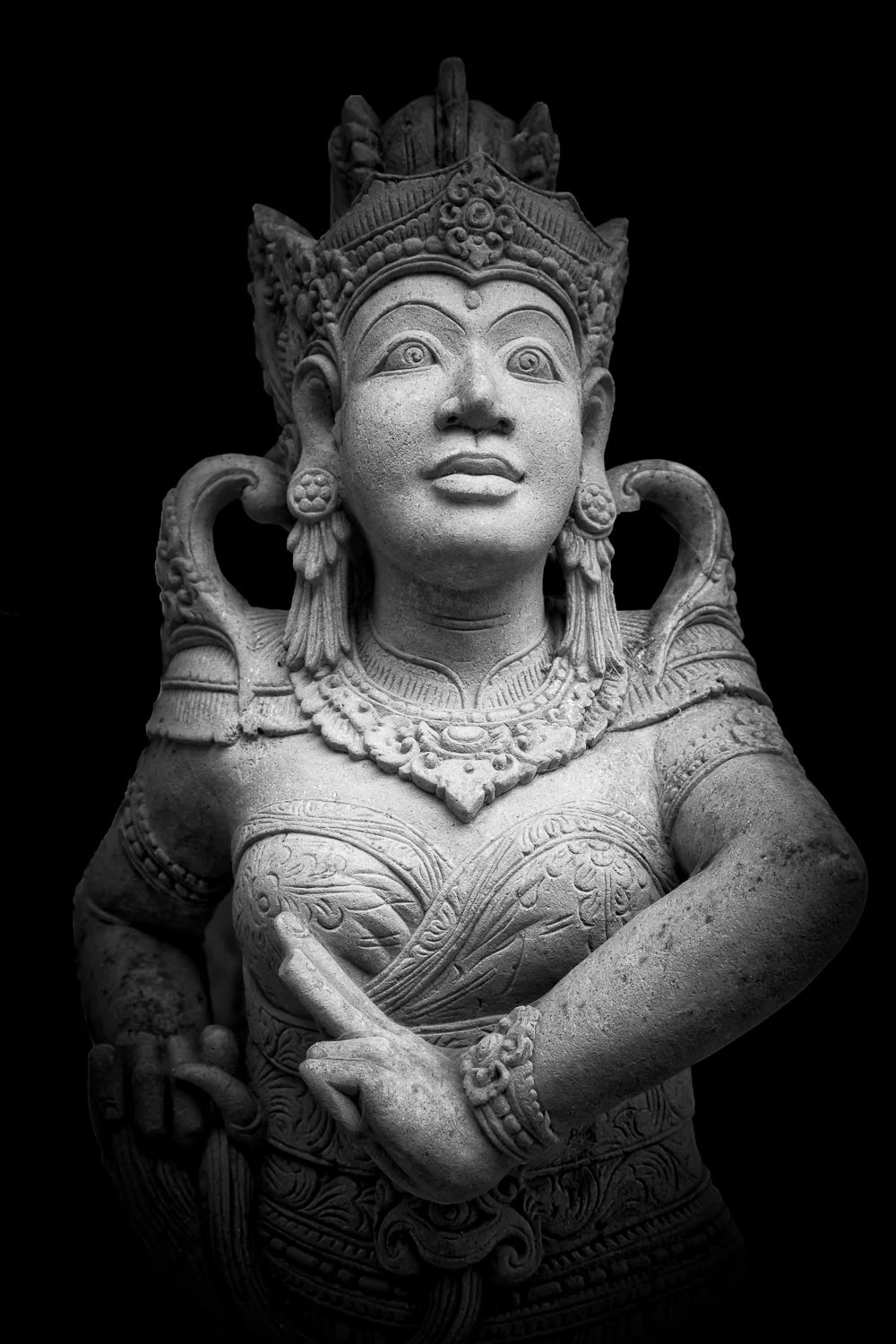How To Add Luminosity To A Photo
Luminous Hindu statue emerges from the darkness in Bali, Indonesia.
Here’s why the notion of luminosity remains relevant to the photographer aspiring to create beautiful fine art prints.
The term luminosity has been most famously used by the great Ansel Adams to describe a particular and quite mysterious quality within beautifully crafted photographic prints.
I’ve observed this phenomena as the appearance of light seemingly radiating out from brighter areas within the print.
It’s subtle, but it’s there. The experience is something like the way light is transmitted, rather than reflected, through a stained glass window.
Techniques that Enhance Luminosity
The image at the top of this post was made in a temple complex in Bali, Indonesia.
The fact that the almost colorless stone statue was illuminated against a much darker background made it a great candidate for rendering into black and white.
I used Adobe Lightroom for initial processing and conversion into black and white. Adobe Photoshop was employed for some local burning to push any remaining details in the background into black.
Photoshop still does a better job at dodging and burning, and spotting for that matter, than does Lightroom.
By significantly darkening the background I've effectively removed distracting elements and given the impression that the statue is coming forwards out of the blackness that surrounds it.
The final touch was the addition of color through a serious of subtle warm tones into the shadows, midtowns and highlights.
It’s not important that you see those colors, as they’re deliberately subtle. But color effects mood and the idea here is to add color to influence viewer response.
The other black and white photos in this post, featuring images I made in La Recoleta Cemetery in Buenos Aires, Argentina display stronger color. That’s because I felt the heavier levels of color enhanced the communicative power of those images.
But the photo at the top of this page relies more on contrast and luminosity to evoke mood and atmosphere.
It’s simply a matter of adapting your post processing to the needs of the image, rather than following a particular recipe each and every time you process a photo.
Back in the days of film a transparency or slide would commonly be viewed by transmitted light, either projected on screen or viewed on a light box.
These days computer monitors also allow us to view our digital files by transmitted light. But a print, whether traditional or digital, is viewed by reflected light.
When we look at a print some of the light is scattered as it reflects from the paper surface back towards the eye. This phenomena is particularly evident in papers with non-gloss surfaces.
What Ansel Adams was referring to as luminosity was the apparent presence of light emitting outwards from the print. This is, of course, an illusion as prints are viewed by reflected rather than transmitted light.
Nonetheless, a beautifully produced print does seem to display this mysterious, luminous quality which I feel is central, at least historically, to the nature of the fine-art print tradition.
Angel statue and sky at La Recoleta Cemetery in Buenos Aires, Argentina.
How to Make a Luminous Black and White Darkroom Print
Back in the day the creation of a luminous black and white darkroom print would involve the following:
Good lighting, the key to all great photographs.
Careful exposure and processing of the film.
Optimal exposure of the print to ensure well separated mid tones and highlights.
Selective dodging and burning to lighten and darken specific areas within the print.
Correct processing of the paper to achieve optimal results.
Local bleaching to chemically lighten certain areas of the print. I used to love this step as I found it produced more of a luminous look than reducing the amount of light hitting the print via dodging.
Chemical toning to increase print longevity and intensify blacks. As a consequence of making the blacks appear visually deeper and more intense, the lightest areas of the print would appear more luminous.
Archival toning and washing of the paper.
Appreciating Luminosity in a Black and White Print
These days software applications, like Adobe Lightroom and Adobe Photoshop, can be used to simulate the effect of luminosity in a print.
But you can't hope to achieve the effect unless you know what it is I'm taking about.
Could I suggest that, over time, you do all you can to major galleries in big cities and actually view prints made by luminaries such as these master fine art photographers:
Ansel Adams
Minor White
Paul Caponigro
John Sexton
It's okay to do some initial research on the web, but that will only provide you with a virtual experience.
To my mind the viewing of great black and white prints is akin to a spiritual experience and, therefore, well worth the effort to do so in person.
While not exactly a hands on experience, the opportunity for an enthusiast photographer to view a classic, fine art black and white print is an opportunity that just shouldn’t be missed.
Please feel free to share this post widely and wildly.







